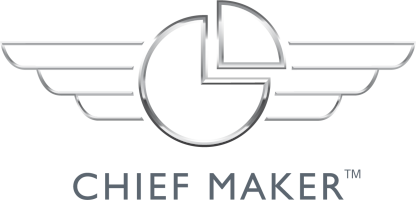
Subscribe to Spotify![]()
In today’s minisode, I’m going to discuss how to work at level in a strategic or executive role.
What I mean by work at level is to actually do the work of your role. If you're in a senior executive role, it is not your role anymore to do the heavy lifting. Your role now is to provide the strategic direction of the business.
That doesn't mean losing your finger on the pulse, but it does mean you now need to spend a good portion of your time working on the business, setting the vision, the strategy, implementing the systems that will drive and automate change across the business.
So what I'd like to work with you on today are three clear moves that will help you do this. And if you don't have them, it's nearly impossible to work at a strategic level.
1. Get the right people on the bus
First and foremost is getting the team right. Get the right people in the right roles with really clear role descriptions, the right metrics for their job, and then delegate with clarity. Give them that opportunity to do their job, and coach and mentor them so they can do their jobs with a certain amount of freedom to express themselves on a daily basis.
Shift out of the doing. You can't lace up the boots any longer and run onto the field because all that is doing is making your people feel a little bit worthless. So get the people side of things correct and invest time in understanding how to do that well.
If you don't have that, you will constantly be drawn back down into the weeds of the business to try and help your people do their job. This requires upfront investment of effort if it's not working too well. And that will result in pain for everyone
2. Operating rhythm
You'll have heard me talk about this before, but get your operating rhythm solid. That’s your annual, quarterly, monthly, weekly and daily operating rhythm – what happens at what time of the year?
Part of that is getting your annual strategy workshop together, followed by quarterly catch ups and then even monthly check ins on that. That particular drumbeat will force you to work on the business, on the vision. It's through that operating rhythm that you clarify the vision, purpose, value, strategy, tactics of your department and of your business.
If you are constantly drawn down into the weeds, it's often because you don't know what is the big thing you're aiming for. Where is your North Star, the thing that you're aligning the troops towards achieving. If you don't have that, and it's not aligned to your operating rhythm, then all that will happen is chaos, priorities will pop up all over the place, we'll be jumping around from one thing to the next and it won't make sense.
So, Chief, clarify the operating rhythm and the mission and everything will calm down and you'll work on the business a whole lot more.
3. Skills pay the bills
Finally, Chief, you need to become fascinated by the process of vision and strategy. Ask yourself, how many books have you read? How many podcasts have you listened to about how to develop vision, how to create strategy, how to build a scorecard to support everything?
Start the process of educating yourself on things that are not what you've spent the first 10, 20 years of your career and university working on, namely your professional area of expertise. The next part of your career is a lot more about company leadership and organisational strategy. You need to master that because right now, you will not be comfortable and will feel a level of insecurity about entering a room to talk about vision and strategy.
If you don't have any expertise within that field, give yourself that skill base and those assets so that when you walk in the room, the insecurity disappears and you can feel comfortable and then more motivated to do it. You will often find that the reason you don't work on the business is because you just don't know how, or don't know how to do maybe one or two parts. Remember, skills pay the bills, Chief.
To summarise the above, if you get the right people in the right roles and clear role descriptions, have good one-to-ones and coach your people, have an operating rhythm that drives your vision and your strategy and you start to learn and get the assets to drive your own professional ability in working on the business, guess what will happen? Over time you will start working on the business which is working at level.
If you don't have those three things, I guarantee you, you're going to have all sorts of trouble and people will even say funny things about you like, “Oh, they've hit a glass ceiling, they've gone as far as they can.”
Chief, you never, ever want that. You want to be able to feel like when you walk in that room, you're justifiably there and you know what you're talking about.
If you’re unsure of how to achieve the above, check out our Chief Maker MiniMBA. I'd love to share some of our expertise, which has been learned over nearly 20 years now, working with executives all over the world.
Deal hope,
Greg
MINI-MBA PROGRAM
 12 week leadership development program
12 week leadership development program
Limited places available
Next intake starting soon!







